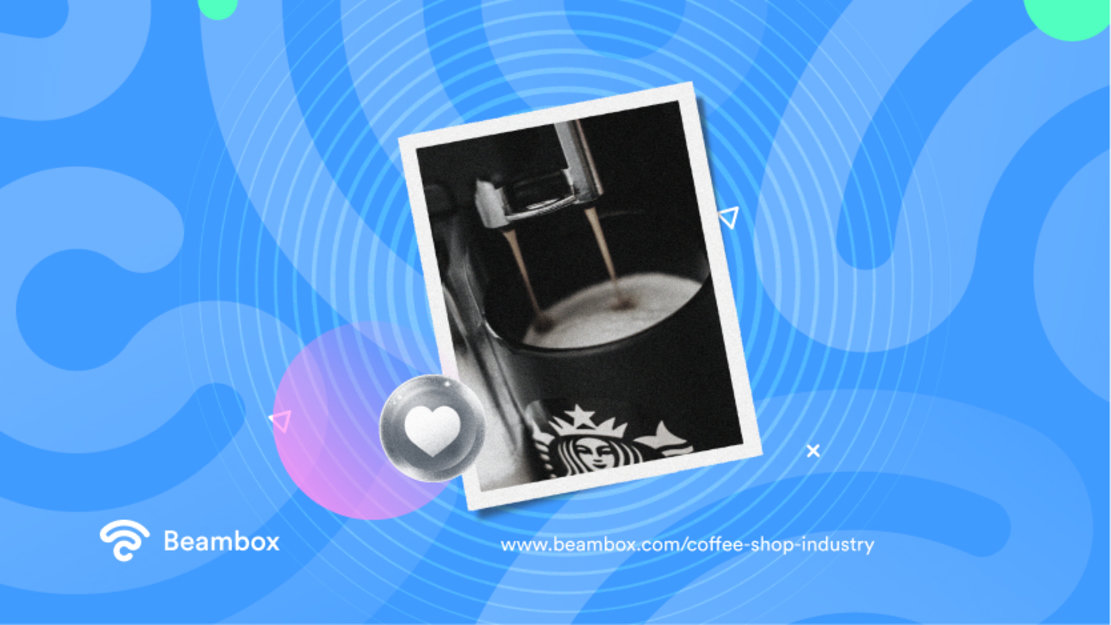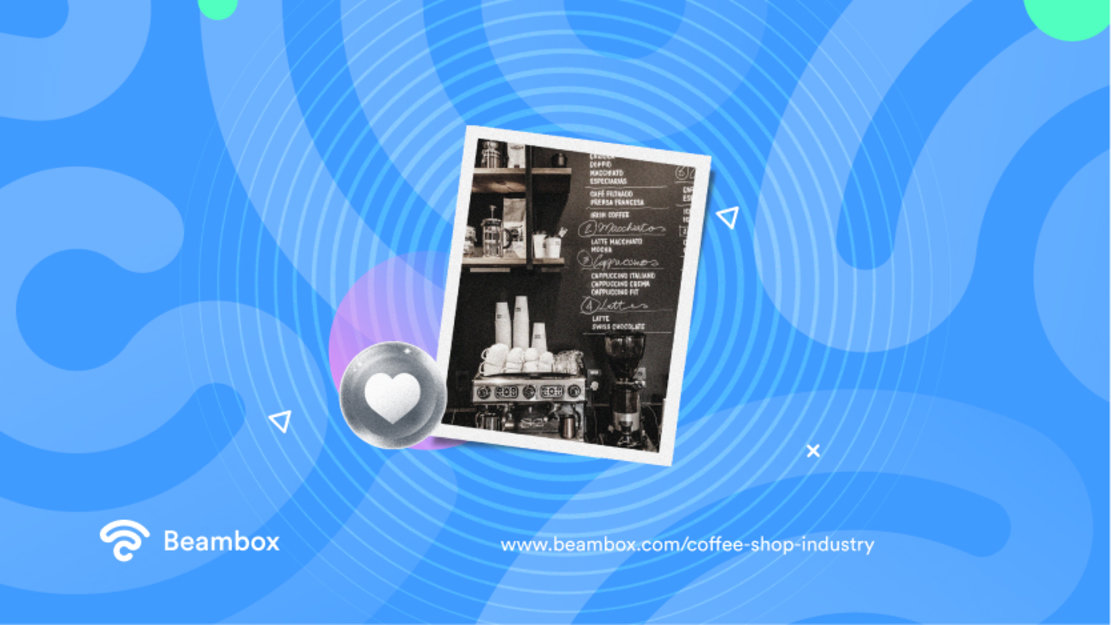Coffee Shop Industry: Target Market, Trends, and Statistics
During the pandemic, the coffee shop industry was among the businesses that faced the most hardships. But since then, things have gradually progressed toward betterment.
If you want to take advantage of that by opening up a coffee shop, you must have the relevant insights. Things like market value, share, statistics, and competitors will help you judge whether this industry is right for you. Once you have that information, you can move on to the latest trends to guide your approach and strategy.
Now, gathering this information might seem overwhelming, but don’t worry. This article has everything you need to know about the coffee shop industry, including its history and target market. Even if you’re already running a related business, this guide will benefit your coffee shop business model. So, let’s start the discussion.

From Beans to Espressos: The Coffee Shop Industry History
Since coffee has become a staple, the number of coffee shops around every corner shouldn’t come as a surprise. What should come as a surprise is the time when coffee shops were illegal!
Yes, there have been several instances in the history of the coffee shop industry when authorities banned coffee. If that sounds interesting, keep reading as we explore the history in more detail.
It all started in 1475, when Kiva Han, a shop in Istanbul, started selling Turkish coffee. This was mostly unfiltered, black coffee that people still enjoy today. That was the beginning of a widespread coffee culture in the Middle East. Soon afterward, coffee houses became a place for political gatherings, games, and socialization.
Owing to that, Islamic leaders banned coffee shops in the early 1500s, fearing they disrupted governance. But they lifted it after some time, and coffee culture started prevailing again.
In 1529, the Turkish invasion of Vienna brought the concept of coffee shops to Europe. However, this time, coffee shop owners had to make the coffee more appealing to the Western culture. So, they started filtering the coffee and adding milk to it. As they started dominating Europe, they caught the attention of France, Germany, and Italy.
England adopted this culture in 1652 by opening the first coffee shop in London. Soon, different social classes began treating coffee houses as places to socialize and develop new ideas.
Again, the fear of revolutionary plans and spreading false news prompted King Charles II to ban coffee shops. But that was only for 11 days.
Finally, the coffee revolution came to America. Here, too, it followed the same ritual of coffee indulgence with business and revolutionary discussions. Then, in 1938, the invention of espresso machines brought forward the modern concept of coffee houses.

Coffee Shop Industry Analysis: Size and Competitive Landscape
Before starting a coffee shop, you should be aware of its market size, share, and competitive landscape. This coffee shop industry analysis has the purpose of informing you about these data. With this information, you’ll be able to judge whether this business will be profitable for you or not. So, let’s dive right in.
In 2022, the coffee shop market was worth US$205.77 billion. Experts anticipate this value to grow by 3.5% CGPR from 2023 to 2029. With these numbers, its value will reach nearly US$261.80 billion in total revenue.
As you can see, the coffee shop industry is experiencing steady growth with a positive trajectory. In simpler terms, coffee shops are in high demand, and consumers are willing to spend more within this sector. But will it be easy to enter this industry?
You probably know about the two coffee chains dominating this industry: Starbucks and Dunkin. Out of these two, Starbucks holds the most market share, followed closely by Dunkin.
However, the industry is quickly expanding with the increasing appearance of independent coffee shops. The main reasons for their success are prime locations and the limited square footage they are operating in.
Therefore, opening a coffee shop could definitely be profitable, depending on the location. Therefore, analyze the demand for coffee and competitors in your area before entertaining the idea of opening a coffee shop.

4 Types of Coffee Shop Target Audiences and A Strategy for Each One
If the above information has solidified your decision to open a coffee shop, you would need a business strategy. Understanding the target market of your coffee shop will help you shape it.
After all, you must make the business appealing to your ideal customer. How would you do that without knowing the various consumer profiles of a coffee shop? So, here are the four types:
- True coffee lovers: These people love the taste of coffee and show genuine interest in knowing more about it. Plus, they are willing to pay a premium price. Guided tours of the brewing process, quality seeds from trusted sources, and knowledgeable talks about coffee appeal to them.
- The adrenaline seekers: People hunting for a quick boost of energy and motivation make another segment of your target audience. They don’t have a particular taste and often need varied coffee options. They appreciate quick and efficient service, online payment options, and mobile ordering.
- Social coffee drinkers: Some people visit coffee shops to socialize. They treat these places as a hub for connecting with their loved ones and meeting new people. Moreover, they just like the feel and environment of a coffee shop. So, train your employees to initiate friendly interactions with these customers. Plus, hosting regular events and collaborating with other local businesses will work in your favor here.
- People with a sweet tooth: These people treat coffee as an opportunity to satisfy their sugar cravings. They customize their coffee drinks with milk, creamers, and syrups. If this is the group you want to target, offer a wide range of flavors and plant-based milk alternatives. Moreover, add desserts like cheesecake, brownies, or specialized products like coffee-flavored ice cream, etc., to your menu.

4 Coffee Shop Industry Trends You Should Focus On
While the above strategies will work to attract your target audience, people are always hunting for the next big thing. Incorporating the latest trends will position your coffee shop as a modern one, appealing to all age groups.
However, not all trends will work in your favor. So, it’s important to understand and analyze the latest advancements to see how they fit into your strategy. For that, here are four coffee shop industry trends you should focus on.
1. People Are Becoming More Conscious About the Environment
As people have become more aware of the environmental impacts of coffee, sustainability is no longer just about recyclable mugs. Consumers now want to support businesses that pay attention to the source of their coffee beans. They also want the coffee to be traceable and ethical.
Therefore, businesses are now incorporating sustainable coffee in their shops. Farmers grow this coffee in a way that conserves nature and doesn’t overexploit natural resources. This means buying coffee beans from trusted sources with an organic or Fair Trade certification.
Moreover, coffee shops are taking steps to reduce wastage. For example, some businesses compost the organic waste to nourish plants. Or they simply buy coffee in bulk, reducing packaging waste and supporting local farmers.
2. Plant-Based Alternatives Are Becoming More Popular
Whether it’s due to veganism, lactose intolerance, or taste preferences, plant-based alternatives are becoming more popular than cow’s milk.
Moreover, consumer tastes are changing, and options like mushroom coffee and vegan creamers are on the rise. When it comes to what type of milk is more popular, almond milk comes at the top. Refrigerated oat milk comes at a close second, with soy milk taking the third place.
Almost all coffee shop chains and independent businesses have started offering plant-based alternatives to cater to these demands. In fact, Starbucks’ Shaken Oat Milk Latte is one of the most popular items on the menu.

3. Coffee Shops Are Investing in Technology
After sustainability and plant-based alternatives, new food technologies are a persistent trend. Modern coffee houses leverage technology as it makes their job easier. Mobile ordering is a favorite here since it offers numerous advantages in purchasing, namely ease and convenience.
Moreover, many coffee shops now allow customers to pre-order coffee they can later pick up from the store. This makes for superior customer service. Customers also appreciate it when coffee shops allow online payments and phone ordering through QR codes.
Additionally, inventory management systems are helping coffee businesses cut down their costs. Instead, CRM systems are making coffee shop marketing more efficient. In short, coffee houses are incorporating technology and automation wherever they can.
4. Customers Are Availing Coffee Subscriptions
Since people weren’t able to access their favorite coffee shops during the pandemic, convenience store coffee and subscriptions gained popularity. Coffee subscriptions are individual companies that provide coffee beans on a monthly basis.
Customers use them even now due to the convenience of trying different blends from the comfort of their homes. They also treat them as gifts to give to their loved ones since these companies provide sample packs as well.
Seeing this, some coffee shops, including Starbucks, have started providing monthly subscriptions. Some businesses even let customers customize their orders. This appeals to their audience since people don’t like committing to a single flavor daily.

Coffee Shop Industry Statistics To Keep in Mind
As we move toward the end of this discussion, it’s important to look at some coffee shop industry statistics. This will help you make reliable decisions if you decide to set foot in the business.
Firstly, you should know that the United States is amongst the largest consumers of coffee. In fact, there are 65,410 coffee shops in the US, with 17,537 more expected by 2025.
Besides, annual sales increased by 10% from June 2021 to June 2022. Moving onto specific brands, Starbucks has become the world’s second most valuable quick-service food brand. It did so by generating US$25.36 billion in global revenue.
Moreover, small coffee shops usually bring in about $60,000 to $160,000 in personal income per year. They make an average profit of $2 per day, with 15% of costs covering expenses.
Lastly, Millennials represent 44% of coffee consumers in the US. Daily consumption has increased to 48% among 18 to 24-year-olds and 60% among 25 to 39-year-olds.
Make the Most of the Widespread Love for Coffee
As you can see, the coffee shop industry has quickly exceeded pre-pandemic levels. With the number of people heading toward coffee shops first thing in the morning, this business can be quite profitable.
If you want data and automation to support your new venture, try out Beambox. It’s a WiFi marketing platform that plugs into the free WiFi you offer to customers to help you make money. With Beambox, you can automate marketing campaigns, gather data from customers, and grow your online reputation.
Additionally, Beambox lets you secure and manage your WiFi with just a few clicks. No IT expertise is required. Start your free trial now!
Get Started With Free WiFi Marketing
Beambox helps businesses like yours grow with data capture, marketing automation and reputation management.
Sign up for 30 days free


